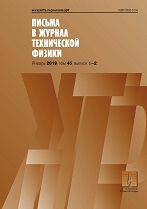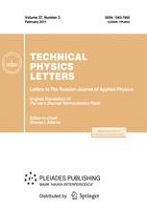|
This article is cited in 1 scientific paper (total in 1 paper)
Conversion of semiconductor nanoparticles to plasmonic materials by targeted substitution of surface-bound organic ligands
P. S. Samokhvalova, D. O. Volodina, S. V. Bozrovaa, D. S. Dovzhenkoa, M. A. Zvaigznea, P. A. Lin'kova, G. O. Nifontovaa, I. O. Petrovaa, A. V. Sukhanovaab, I. R. Nabievab
a National Engineering Physics Institute "MEPhI", Moscow
b Laboratory of Research in Nanosciences EA 4682, University of Reims Champagne-Ardenne, Reims, France
Abstract:
Plasmonic nanoparticles have become a popularly accepted research tool in optoelectronics, photonics, and biomedical applications. The relatively recently appearing semiconductor plasmonic nanoparticles, as opposed to metal ones, are characterized by infrared plasmonic optical transitions and their application has a great future. In this work, the possibility of conversion of semiconductor (excitonic) fluorescence nanocrystals, i.e., quantum dots of the CuInS$_2$ composition, to plasmonic nanoparticles by postsynthetic treatment without changes in the chemical composition of inorganic part of the nanocrystals was demonstrated for the first time ever.
Received: 10.12.2018
Revised: 27.12.2018
Accepted: 27.12.2018
Citation:
P. S. Samokhvalov, D. O. Volodin, S. V. Bozrova, D. S. Dovzhenko, M. A. Zvaigzne, P. A. Lin'kov, G. O. Nifontova, I. O. Petrova, A. V. Sukhanova, I. R. Nabiev, “Conversion of semiconductor nanoparticles to plasmonic materials by targeted substitution of surface-bound organic ligands”, Pisma v Zhurnal Tekhnicheskoi Fiziki, 45:7 (2019), 11–14; Tech. Phys. Lett., 45:4 (2019), 317–320
Linking options:
https://www.mathnet.ru/eng/pjtf5473 https://www.mathnet.ru/eng/pjtf/v45/i7/p11
|


| Statistics & downloads: |
| Abstract page: | 47 | | Full-text PDF : | 17 |
|





 Contact us:
Contact us: Terms of Use
Terms of Use
 Registration to the website
Registration to the website Logotypes
Logotypes








 Citation in format
Citation in format 
